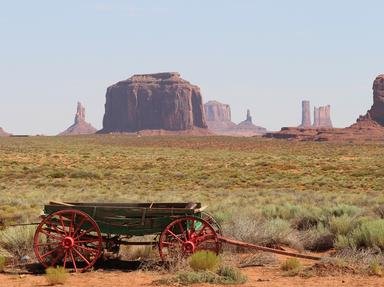Quiz Answer Key and Fun Facts
1. Which 1980 Revisionist Western shared its name with a dooms day cult, whose members committed suicide when the Hale-Bopp Comet was at its brightest in 1997?
2. Alan Ladd starred in the Traditional Western "Shane" in 1953. Which 'apocalyptic', Eastwood Revisionist Western was considered by many to be inspired by this classic, because of the similar plots and motifs?
3. The Revisionist Western "Walker" was based on the historical figure William Walker, an American who took over a Central American country in the 1850s. Which country was this, that also figured prominently in US foreign policy during the 1980s?
4. "Young Guns" and "Young Guns II" told the story of Billy the Kid and starred six up-and-coming young actors. Of these four, which one played Billy?
5. "Dances with Wolves" told the fictional story of a US Cavalry officer's interactions with which Plains tribe?
6. Gene Hackman appeared in three Revisionist Westerns during the 1990s. Which of these was NOT one of them?
7. "Ride With the Devil" featured a historical event as a pivotal part of the plot, the Lawrence Massacre during the Civil War. In the movie and historically, who was responsible for this event?
8. The Revisionist Western "Tombstone" focused on the feud between the Earp Brothers and what group of outlaws?
9. Johnny Depp starred as what kind of man in a 1995 Revisionist Western?
10. Fill in the blank with the missing word in the title of a 1991 Revisionist Western starring Chris Cooper and Rosalind Chao: "Thousand Pieces of _____". The movie told the story of a female Chinese immigrant in the Old West.
Source: Author
tazman6619
This quiz was reviewed by FunTrivia editor
skunkee before going online.
Any errors found in FunTrivia content are routinely corrected through our feedback system.

